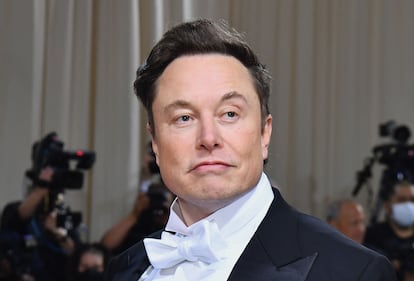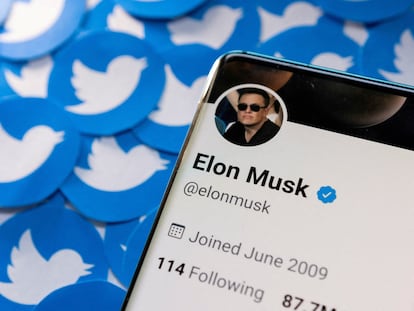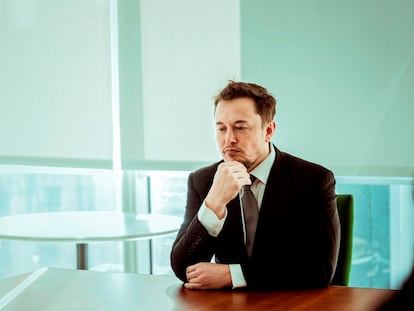What would an Elon Musk-owned Twitter look like?
The mercurial mogul says he wants to turn the social network into an app for everything, like China’s WeChat


When Musk decided to buy Twitter, he didn’t have a business plan, just some ideas about how it could be better. Everyone has ideas, but Musk also has the money to make them happen. His offer to buy Twitter at first seemed like the latest whim of a billionaire who is known for his social media hyperactivity, which perhaps is why he started looking for excuses to back out of the deal. After Twitter took him to court for withdrawing his purchase offer, Musk realized that his chances of wriggling out of the deal were slim and abruptly reversed course once again. If there are no new surprises, Elon Musk will soon own Twitter. He will take over after a spate of harsh attacks against the company and its executives, and after leaving a trail of clues in court documents and public statements about what he intends to do with the social network. Musk says he might establish a paid subscription model and eliminate permanent bans like the one imposed on former US president Donald Trump. His latest cryptic tweet hints at some sort of all-encompassing app.
“Buying Twitter is an accelerant to creating X, the everything app,” he tweeted after announcing his second about-turn pertaining to his $44 billion Twitter purchase. Musk didn’t offer any other information, but has expressed admiration in the past for the Chinese WeChat app, which evolved from a messaging service to a multinational platform with payment, e-commerce, health, subscription management and other services used by the Chinese in their daily lives.
Buying Twitter is an accelerant to creating X, the everything app
— Elon Musk (@elonmusk) October 4, 2022
Musk had already signaled his desire to have 104 million paying subscribers of the mysterious X app by 2028 in his various presentations to potential investors and banks. He also wants to multiply the number of overall Twitter users from the current 217 million, to 600 million in 2025 and 931 million in 2028. After achieving those goals, Musk said he would consider taking Twitter public again.
The eccentric and controversial billionaire is a born entrepreneur who founded PayPal, electric car company Tesla and the SpaceX aerospace company. He recently unveiled a clunky Tesla-made humanoid robot that he wants to mass produce and sell for under $20,000. A complete recasting of Twitter will surely appeal more to Musk than just tinkering with the app.
Whatever “everything-app X” turns out to be, Musk’s most pressing task is taking the helm at Twitter, a company that has been bloodied by acrimonious battles with its soon-to-be owner. The employee exodus has accelerated, and those who remain worry about a radically different corporate culture under Musk. Since Musk’s latest announcement, lawyers on both sides have been hard at work bullet-proofing a new deal. Meanwhile, the judge presiding over Twitter’s lawsuit of Musk has suspended the proceedings to permit the billionaire’s takeover deal to close, according to a Thursday court filing. The judge’s order said if Musk, the world’s richest person, failed to close by October 28, she would schedule a trial for November.
Musk has always said that he wants to rid Twitter of all the spam and bots that plague users. He said he had to take the company private because the purge would “make the numbers look terrible.” That’s why his excuse for backing out of the deal – there were too many fake or inactive accounts – was so implausible. In his Twitter countersuit, Musk revealed that knowing the number of real users was critical to establishing a subscription business model.
“Musk believed Twitter was over-reliant on advertising revenue, with over 90% of its revenue generated by ads,” states Musk’s countersuit of Twitter. “When he signed the deal, Musk believed he could kill two birds with one stone: by implementing certain changes, such as requiring effective verification of all users, he could eliminate what he thought – based on what Twitter misrepresented – was a less than 5% false or spam account problem. Musk could then better engage the over 220 million mDAU [monetizable daily active users] that Twitter represented were real, monetizable users, to create greater engagement and subscription revenue.”
Twitter already has a subscription service in some countries called Twitter Blue that offers extra functionality and a customizable user experience, but Musk has never been very enthusiastic about that premium service.
Trump’s return to Twitter
Musk has said he would restore Trump’s access to Twitter once he bought the company. Another hyperactive user, the former president was permanently banned from the platform after Twitter ruled that his incessant tweets about the January 6 assault on Capitol Hill violated its policy against content inciting violence. Trump later launched his own Twitter look-alike called Truth Social, and hasn’t said whether he’d go back to Twitter if allowed. Musk and Trump have also sparred recently. When Trump mocked Musk and his “rockets to nowhere,” the tech tycoon replied that it was time for the former president to “sail into the sunset.”
If many or all of those permanently banned from Twitter were allowed to return, their proven aversion to content self-moderation and espousal of unrestricted freedom of expression could turn the platform into a tool for distributing propaganda and manipulating elections. Musk has said that he is only willing to censor “those who explicitly advocate violence,” which provides lots of leeway for people to disseminate conspiracy theories, hoaxes and hate speech. Internet trolls will be welcomed. “Twitter has become a kind of de facto public square, so it’s really important that people believe and perceive that they can speak freely within the confines of the law,” said Musk in April when he first made his offer to buy Twitter.
Musk wants a feature for Twitter users to edit their messages after posting. Twitter has already begun testing a new edit button at the bottom of the message, and people can now edit their tweets within thirty minutes of posting (the version history is retained). It remains to be seen whether Musk thinks this new feature is good enough. He has also pointed out the need for longer messages, and wants to make Twitter’s algorithms transparent and open source, one of his more thoughtful ideas.
Huge severance payouts
After a back-and-forth tweet storm that ended with Musk responding to Twitter CEO Parag Agrawal with a smiling poop emoji, few senior executives have any illusions about staying on with the company. Musk has openly criticized Twitter’s current management team, and has hinted on several occasions that he will personally take over operations.
But Agrawal won’t leave empty-handed. The merger prospectus disclosed that he would be entitled to a $60 million golden parachute. Other senior executives will also be richly compensated to walk out the door: $46.4 million for chief financial officer, Ned Segal; $21 million for chief legal officer, Vijaya Gadde; and $20 million for chief customer officer, Sarah Personette.
Musk tried to negotiate a price cut
Musk’s agreement to buy Twitter for the original deal price followed earlier discussions about a price cut, according to the Wall Street Journal. The New York financial daily claims that lawyers for both sides held a series of virtual meetings that failed to reach an agreement on a lower price.
Musk was not only looking like the loser in his battle with Twitter, but it was also becoming clear that he had not surrendered all the messages and communications about the Twitter deal as required by the Delaware court. The whole fiasco over Musk’s Twitter purchase is also shining an unwanted spotlight on his cronies, including Oracle founder Larry Ellison (also a Tesla advisor); PayPal co-founder Jason Calacanis (an investor in Uber and Robinhood and Musk’s partner in the Twitter deal); and David Sacks, another PayPal co-founder with a penchant for rude social media posts.
Tu suscripción se está usando en otro dispositivo
¿Quieres añadir otro usuario a tu suscripción?
Si continúas leyendo en este dispositivo, no se podrá leer en el otro.
FlechaTu suscripción se está usando en otro dispositivo y solo puedes acceder a EL PAÍS desde un dispositivo a la vez.
Si quieres compartir tu cuenta, cambia tu suscripción a la modalidad Premium, así podrás añadir otro usuario. Cada uno accederá con su propia cuenta de email, lo que os permitirá personalizar vuestra experiencia en EL PAÍS.
¿Tienes una suscripción de empresa? Accede aquí para contratar más cuentas.
En el caso de no saber quién está usando tu cuenta, te recomendamos cambiar tu contraseña aquí.
Si decides continuar compartiendo tu cuenta, este mensaje se mostrará en tu dispositivo y en el de la otra persona que está usando tu cuenta de forma indefinida, afectando a tu experiencia de lectura. Puedes consultar aquí los términos y condiciones de la suscripción digital.
More information
Últimas noticias
Most viewed
- Sinaloa Cartel war is taking its toll on Los Chapitos
- Oona Chaplin: ‘I told James Cameron that I was living in a treehouse and starting a permaculture project with a friend’
- Reinhard Genzel, Nobel laureate in physics: ‘One-minute videos will never give you the truth’
- Why the price of coffee has skyrocketed: from Brazilian plantations to specialty coffee houses
- Silver prices are going crazy: This is what’s fueling the rally










































